In this NewsFlash, we find out how bitter taste receptors in the lungs could lead to new asthma treatments, how our ancestors enjoyed some veg with their meat and how gene therapy could offer a way out of depression. Plus, we discover the most distant object yet confirmed, light from which has travelled for over 13 billion years to reach us!
In this episode
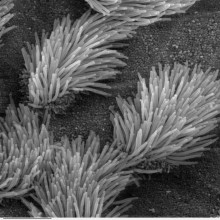
00:24 - Asthma discovery leaves a bitter taste in the... lungs?
Asthma discovery leaves a bitter taste in the... lungs?
It's well-known that human tongues can taste five sensations - sweet, salt, bitter,sour and the mysterious umami. This is due to different molecular receptors in our tastebuds. But research from scientists in the US has shown that bitter taste receptors actually play a role in our lungs as well as our tongues - and it could lead to new ways to treat asthma and other lung diseases that affect around 300 million people around the world, including me!
 This work builds on
This work builds on
a discovery we covered on the show back in 2009, where researchers first discovered that the same receptors that detect bitter tastes on our tongues could also be found in our lungs, lurking on special hairy cells that line the airways. It's thought that they're there to detect nasty stuff in the air we breathe, and stimulate the lungs to get rid of them, for example by producing more phlegm. Now Stephen Liggett and his team at the University of Maryland have published a paper in the journal Nature Medicine showing that the same bitter receptors can be found in airway muscle cells too.
The researchers thought that stimulating these bitter receptors with bitter chemicals might cause muscle cells to contract, narrowing the airways and causing coughing, helping to avoid inhaling any nasty stuff. But in fact they found the opposite - bitter chemicals caused a massive spike in calcium within the muscle cells, making them relax, and making airways become more open. And this isn't just a small effect - it was three times larger than the effect they saw with chemicals called beta-adrenergic receptor agonists - molecules that are commonly used to relieve the airway constriction caused by asthma and other lung diseases.
The scientists think that stimulating these bitter receptors could be a powerful way to treat asthma or other diseases such as chronic obstructive pulmonary disease, or COPD. There are thousands of naturally-produced and man-made bitter chemicals in the world, so at least one - and probably more - might turn out to be suitable as a drug. And the lab research suggests that combining bitter receptor activators with current asthma treatments - such as the beta-adrenergic receptor agonists I mentioned earlier - might pack even more of a punch, as the drugs work in different ways on the lungs. But it might mean that your asthma inhaler tastes pretty nasty!
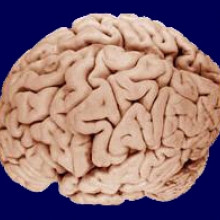
02:59 - Gene Therapy for Depression
Gene Therapy for Depression
A gene injected into one region of the brain might hold the key to treating depressed patients who fail to respond to conventional therapies.
Writing in Science Translation Medicine, Cornell-based scientist  Brian Alexander and his colleagues show how manipulating a gene called p11 in a brain region known as the nucleus accumbens can alter behaviour.
Brian Alexander and his colleagues show how manipulating a gene called p11 in a brain region known as the nucleus accumbens can alter behaviour.
Mice genetically engineered to lack the gene, which plays a role in sensitising nerve cells to serotonin, one of the brain's feel-good nerve transmitter chemicals, display behaviours consistent with depression, including a lack of interest activities that control animals find rewarding. But, by using a modified adeno-associated virus as a vector to add the gene back into the nucleus accumbens, which is known to be the brain's main pleasure centre, the team found that the previously p11-deficient mice began to behave like their normal control counterparts.
Intriguingly, brains from depressed humans studied post mortem show that the human p11 gene is also present at much lower levels in the same brain regions of these subjects, suggesting that what works in the mice might also work in man. And as clinical trials are already underway in patients with Parkinson's Disease to add therapeutic genes that can remedy some of the symptoms of the disorder, the same techniques could be used to deliver extra copies of p11 to depressed people.
But, in the nearer term, researchers will also now focus on finding other ways to manipulate the activity of the p11 gene, which could offer a range of new ways to fight depression.
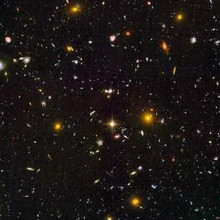
06:16 - The Most Distant Object Ever Confirmed
The Most Distant Object Ever Confirmed
Professor Michael Bremer, Bristol University
This week, an international team of astronomers have confirmed the sighting of the most distant object ever seen. Ben Valsler spoke to Bristol University's Professor Malcolm Bremer to find out more.
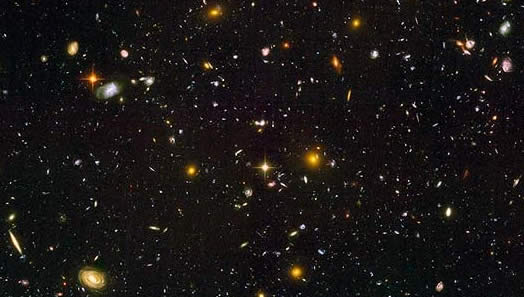 Malcolm - We were trying to identify extremely distant galaxies - in this case, a single galaxy - so that we can understand the very early stages of galaxy evolution. We're seeing this galaxy very early on in the history of the universe. We think therefore that it will tell us a lot about the early stages of how galaxies form and then evolve from the very small building blocks, such as this galaxy, into the larger galaxies like the Milky Way that we see today. And also, we are seeing this object at a particular time in the universe where there is a transition in the state of the gas that fills the universe, and we hope to be able to use this galaxy as a probe of that.
Malcolm - We were trying to identify extremely distant galaxies - in this case, a single galaxy - so that we can understand the very early stages of galaxy evolution. We're seeing this galaxy very early on in the history of the universe. We think therefore that it will tell us a lot about the early stages of how galaxies form and then evolve from the very small building blocks, such as this galaxy, into the larger galaxies like the Milky Way that we see today. And also, we are seeing this object at a particular time in the universe where there is a transition in the state of the gas that fills the universe, and we hope to be able to use this galaxy as a probe of that.
Ben - So if we come back to using the light from this galaxy as a probe to measure cosmology a bit later on, first of all, tell me a bit more about this galaxy. It's at what we think of as a very large red shift. Now what does that actually mean?
Malcolm - The red shift is a measure of how much the universe has expanded between the time that the photons were emitted by the galaxy, the radiation was emitted by the galaxy, and by the time we receive it. So a red shift of about an 8 ½ actually relates to the universe stretching by about 9 ½ times in linear dimension.
Ben - And what does that mean about how old the light actually is that's getting to us?
Malcolm - That actually means that the light was emitted about 600 million years after the Big Bang, and we are receiving it now, 13.1 billion years later. As well as the time it takes for the light to reach us, also, the light that we're interested in, which is originally emitted in the ultraviolet, we receive in the infrared because the expansion of the universe stretches all of the wavelengths of radiation coming from the galaxy by that much, by the time we actually receive the radiation.
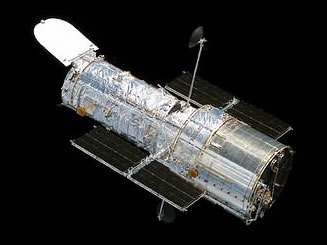 Ben - So, this new galaxy, is there anything particularly special about it that enables us to be able to see it, even though it's that far away?
Ben - So, this new galaxy, is there anything particularly special about it that enables us to be able to see it, even though it's that far away?
Malcolm - Well we hope not because what we're trying to characterise is the typical galaxy at these distances. The area of sky that was searched in order to find this object was searched using the Hubble Space telescope with a brand new infrared camera by other astronomers and they came up with a catalogue of objects that they believe to be at these great distances. Any one of them could be at the distance of this object or even slightly larger. So what we're actually hoping for is, this is a typical, very, very distant object. It just happens to be, because it takes an awful lot of effort, that this is the first one that we've confirmed to be this far away.
Ben - So you mentioned earlier that we can use it to probe cosmology really. As this light was emitted when the universe was very young, what can we determine about the state of the universe, just from this light?
Malcolm - Well, we expect that this object is observed as the hydrogen that fills the universe changed in state. Previous to this time, the hydrogen was cool, neutral material like the gas within the atmosphere of Earth. But then, at some point, something ionised that gas, and the effect of that is that the neutral hydrogen is opaque to much of the radiation that's emitted by these galaxies. But then as it gets ionised, charged effectively, and heated, it becomes transparent, and you can see the light escaping from these galaxies. It's an important step in the evolution of the universe. Knowing when it started, when this process ended, and what was causing the heating, the ionisation of the gas, is actually an important set of questions for astronomers. If we understand that, we understand an awful lot more about the early universe than we currently do.
Ben - So looking at the spectrum of light from this enormously distant galaxy - not only can we tell how far away it is, how much space is expanded, but by looking at the bits where this gas has absorbed some of that light in order to become ionised, we can also start to get an idea of the conditions that were around this galaxy.
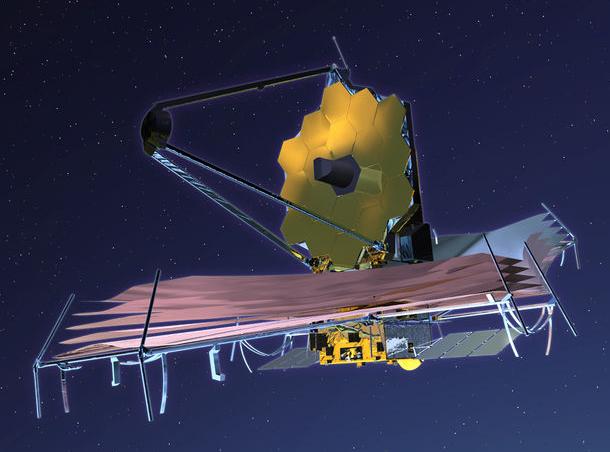 Malcolm - That's right and one thing that's peculiar about this galaxy is, although we've detected it and we've detected a signature of hydrogen within it, it doesn't seem to be luminous enough for itself to have converted the hydrogen that's around it on the larger scale, by itself, from neutral to ionised gas. We suspect therefore that what we're seeing is the signature of other galaxies that were either very bright before the time that we're actually seeing this galaxy, or just lots of smaller galaxies which are too faint to detect, which have actually done the excavation of the neutral hydrogen for that object. It on itself, I don't think would be able to actually carry out that process.
Malcolm - That's right and one thing that's peculiar about this galaxy is, although we've detected it and we've detected a signature of hydrogen within it, it doesn't seem to be luminous enough for itself to have converted the hydrogen that's around it on the larger scale, by itself, from neutral to ionised gas. We suspect therefore that what we're seeing is the signature of other galaxies that were either very bright before the time that we're actually seeing this galaxy, or just lots of smaller galaxies which are too faint to detect, which have actually done the excavation of the neutral hydrogen for that object. It on itself, I don't think would be able to actually carry out that process.
Ben - So that's evidence of other galaxies that are still too faint for us to see with current technology, but evidence that they must have been around in order to have that effect. What's the next step for us? How do we start to try and look for these galaxies?
Malcolm - These observations clearly push right at the limit of what we're able to do with current technology with both space based and ground based telescopes, but there will be technological improvements that will happen quite soon within astronomy. For example, we will get new instruments on the ground based telescopes that we're using at the moment. But also, over the next few years, there will be the successor to the Hubble Space telescope - this is the James Webb Space telescope. And then on the longer term, we hope to build extremely large telescopes in the ground with mirrors of size 30-40 metres, whereas the current typical size of a large telescope is an 8 metre mirror. That will be much, much more sensitive to these kinds of objects and hopefully we will not just be able to do the detection of these objects, but we will get much better spectra of them, and therefore be able to tell you much more about their physical state.
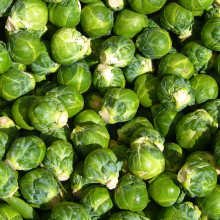
12:54 - Vegetables with your Mammoth Steak Sir?
Vegetables with your Mammoth Steak Sir?
Archaeologists working a several sites across Europe have found evidence that our stone age ancestors were a dab-hand in the kitchen much earlier than we first thought.
Writing in PNAS, Italian researcher Anna Revedin  and her colleagues have isolated and identified grains of starch stuck to stone tools, including a primitive pestle and mortar, recovered from three archaeological sites in Italy, Russia and the Czech Republic.
and her colleagues have isolated and identified grains of starch stuck to stone tools, including a primitive pestle and mortar, recovered from three archaeological sites in Italy, Russia and the Czech Republic.
Critically, these sites, one of which contains the remains of two mammoths and a large hearth, date back to about 30,000 years ago, a time when early humans were believed to be principally carnivorous and less keen on vegetables than the average teenager.
But careful microscopic examination of the tools recovered from the sites confirms that their users were collecting starch-rich plants, principally rhizome-bearing species, which they were presumably grinding to a primitive flour.
Moreover, to make the food palatable and liberate sufficient calories to make the exercise worthwhile, they must also have been cooking the proceeds, the team argue.
Large scale plant processing is known to have been well established when the first farms appeared in Mesopotamia about 12,000 years ago.Before this time, however, incorporation of plant products into the average human diet is much less well understood.
Now we know that even early Europeans were partial to a palaeolithic meat and two veg too...










Comments
Add a comment